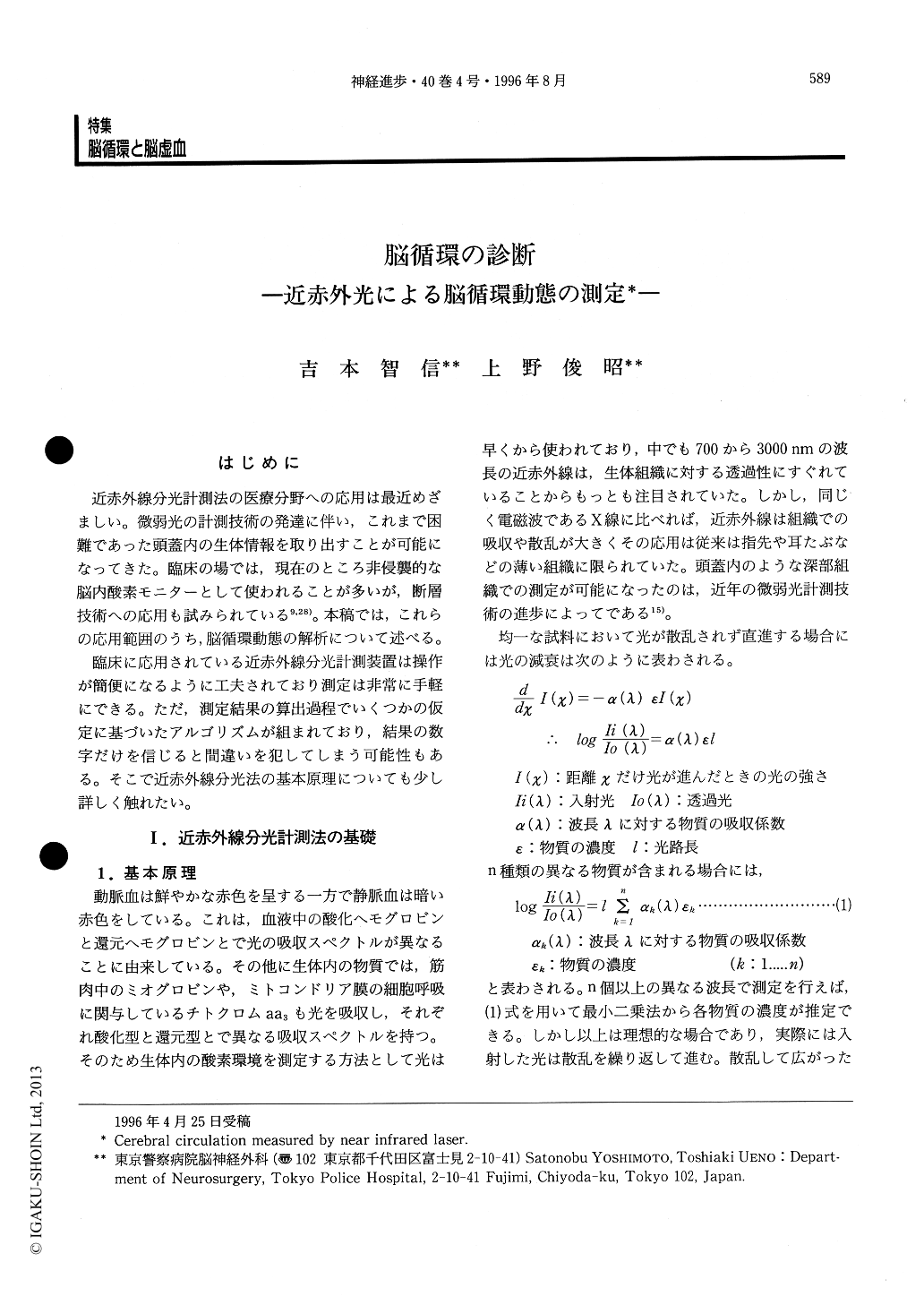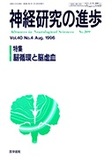Japanese
English
- 有料閲覧
- Abstract 文献概要
- 1ページ目 Look Inside
はじめに
近赤外線分光計測法の医療分野への応用は最近めざましい。微弱光の計測技術の発達に伴い,これまで困難であった頭蓋内の生体情報を取り出すことが可能になってきた。臨床の場では,現在のところ非侵襲的な脳内酸素モニターとして使われることが多いが,断層技術への応用も試みられている9,28)。本稿では,これらの応用範囲のうち,脳循環動態の解析について述べる。
臨床に応用されている近赤外線分光計測装置は操作が簡便になるように工夫されており測定は非常に手軽にできる。ただ,測定結果の算出過程でいくつかの仮定に基づいたアルゴリズムが組まれており,結果の数字だけを信じると間違いを犯してしまう可能性もある。そこで近赤外線分光法の基本原理についても少し詳しく触れたい。
The near infrared (NIR) light can penetrate the human body. So, as the technology of photodetection system develops, it has been able to be used for the examination of the internal human body. The NIR light is absorbed mainly by oxygenated hemoglobin (oxy-Hb), deoxygenated hemoglobin (deoxy-Hb) , oxygenated cytochrom-aa3 (Cyt), and deoxygenated cytochrorn-aa3 (Cyt-H) in the brain tissue. By using four NIR lights, a NIR spectrometer can measure the amount of oxy-Hb and deoxy-Hb theoreti-cally.

Copyright © 1996, Igaku-Shoin Ltd. All rights reserved.


